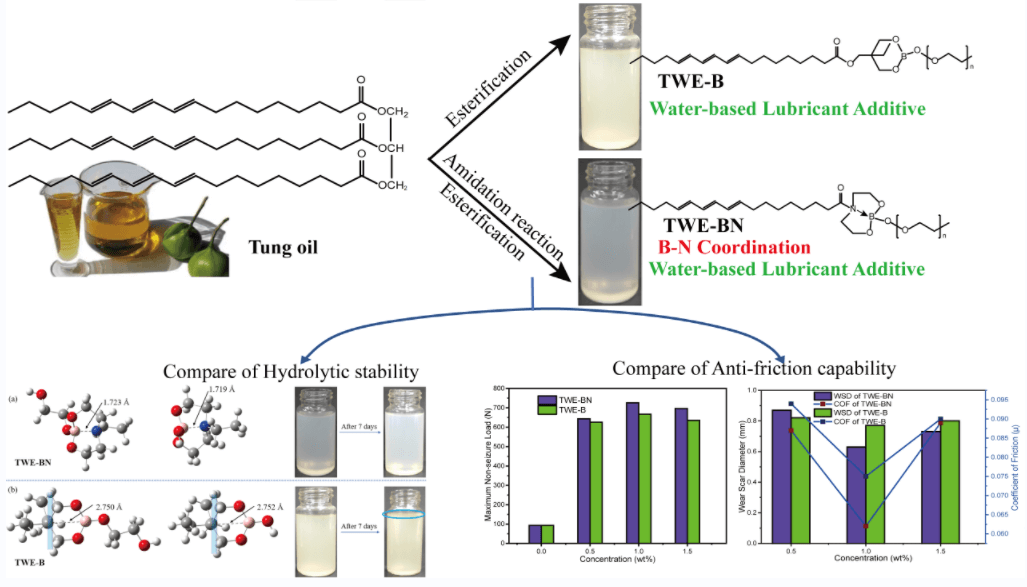 Open Access
Open Access
ARTICLE
Insight into Hydrolytic Stability and Tribological Properties of B-N Coordination Tung Oil-Based Lubricant Additive in Water
1 Institute of Ecological Conservation and Restoration, CAF, Beijing, 100091, China
2 Institute of Chemical Industry of Forest Products, CAF; National Engineering Laboratory for Biomass Chemical Utilization; Key Laboratory of Chemical Engineering of Forest Products, National Forestry and Grassland Administration; Key Laboratory of Biomass Energy and Material, Jiangsu Province; Jiangsu Co-Innovation Center of Efficient Processing and Utilization of Forest Resources, Nanjing, 210042, China
3 School of Chemical Engineering, Nanjing University of Science & Technology, Nanjing, 210094, China
* Corresponding Author: Haiyang Ding. Email:
(This article belongs to the Special Issue: Renewable Biomass as a Platform for Preparing Green Chemistry)
Journal of Renewable Materials 2023, 11(3), 1367-1381. https://doi.org/10.32604/jrm.2022.023411
Received 25 April 2022; Accepted 21 June 2022; Issue published 31 October 2022
Abstract
A tung oil-based boron-nitrogen coordination polymer (TWE-BN) was specially designed and synthesized as a highly efficient water-based lubricant additive, which has been beneficial to both energy conservation and conducive to environmental protection. Its hydrolysis stability and tribological properties in water were investigated. To better research the lubricating properties, and thus to understand the interaction between the surface and the lubricating additives. Herein, both experimental and theoretical computations based on density functional theory (DFT) were performed. The addition of TWE-BN reduces the water friction coefficient and wear scar diameter, and the maximum non-seizure load increased from 93 to 726 N. Moreover, the anti-corrosion ability on copper was classified as 1b level. The stainless-steel surface was analyzed using scanning electron microscopy (SEM) and X-ray photoelectron spectroscopy (XPS). In hydrolytic stability testing, TWE-BN was better than nitrogen-free tung oil-based lubricant additive (TWE-B) and remained non-hydrolyzed for at least 15 days, implying the feasibility of tung oil-based boron-nitrogen coordination as highly effective and hydrolytic stability lubricant additives.Graphic Abstract

Keywords
Cite This Article
 Copyright © 2023 The Author(s). Published by Tech Science Press.
Copyright © 2023 The Author(s). Published by Tech Science Press.This work is licensed under a Creative Commons Attribution 4.0 International License , which permits unrestricted use, distribution, and reproduction in any medium, provided the original work is properly cited.


 Submit a Paper
Submit a Paper Propose a Special lssue
Propose a Special lssue View Full Text
View Full Text Download PDF
Download PDF Downloads
Downloads
 Citation Tools
Citation Tools